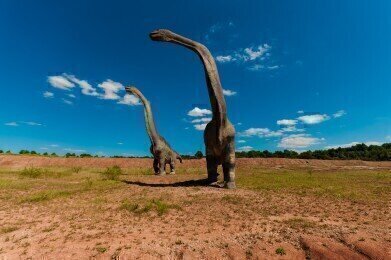Mass Spectrometry & Spectroscopy
Have Scientists Discovered a Fossilised Dinosaur Brain?
Nov 05 2016
In an archaeological milestone, palaeontologists from the University of Cambridge are averring that they’ve unearthed the world’s first known fossilised dinosaur brain. Dating back to roughly 133-million-years ago, the researchers have confirmed that the fossilised brain belonged to a herbivorous dinosaur that fell into a swampy tidal pool in southern England.
They explain that the dinosaur’s boggy death probably played a role in preserving the chunk of petrified brain tissue, which offers unique insight into the brains of the giants that ruled the Earth for 135-million years.
Brain or bone?
There’s been some speculation over exactly what the fossil is, but according to head palaeontologist David Norman its wrinkled topology indicates that it was once a fully functional a brain.
“There are pits and creases and folds,” he explained at the annual meeting of the Society of Vertebrate Paleontology. “It’s a little bit like your bed when you wake up in the morning — somewhat crinkled and folded.”
A new glimpse at dinosaur smarts?
Up until now, the intellectual capabilities of dinosaurs have remained largely mysterious. Though thanks to this new discovery, microscopic analysis has offered researches an exciting new glimpse at dinosaur brains. Under a scanning electron microscope scientists were able to identify tiny blood vessel branching tubes criss-crossing their way across the fossil’s surface, and penetrating what was once prehistoric brain tissue.
While it does offer a glimpse at the physical characteristics of a dinosaur brain, Norman admits that the fossil doesn’t unlock insight into “the mind of dinosaurs.”
How to pickle a dinosaur brain
133-million-years ago, Norman speculates that a herbivorous dinosaur slipped into a boggy tidal pool. He fathoms that is was perhaps a Barilium or Hypselospinus, and that its body was roughly the length of a VW Beetle. As it tumbled head first into the swamp he explains that acidic water pickled the brain, with minerals later petrifying the preserved tissue. Millions of years later a beachcombing fossil collector stumbled across the relic, which has since been profiled by prestigious publications like the Geological Society of London.
Across the scientific community, annual meetings held by groups like the Society of Vertebrate Palaeontology serve to educate, inform and inspire. For more information, ‘Visiting the 37th BMSS Annual Meeting 13th-15th September 2016 BMSS Introduction to Mass Spectrometry Course 12th & 13th September 2016’ spotlights one of the most important events on the MS calendar.
Digital Edition
Lab Asia 31.2 April 2024
April 2024
In This Edition Chromatography Articles - Approaches to troubleshooting an SPE method for the analysis of oligonucleotides (pt i) - High-precision liquid flow processes demand full fluidic c...
View all digital editions
Events
May 05 2024 Seville, Spain
InformEx Zone at CPhl North America
May 07 2024 Pennsylvania, PA, USA
May 14 2024 Oklahoma City, OK, USA
May 15 2024 Birmingham, UK
May 21 2024 Lagos, Nigeria











.jpg)






